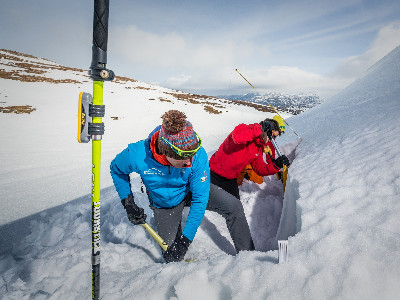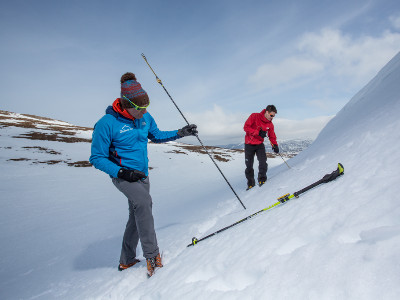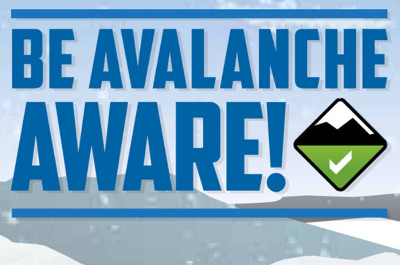By Jon Jones, Glenmore Lodge

For me, there is no better feeling than being in the mountains in winter. It is such a different experience from summer – no midges for starters! There can be intense but liberating cold, beautiful deep winter colours, fantastic air clarity with distant views of mountain ranges and brocken spectres for the lucky few!
The UK mountains in winter are often underestimated. Compared to summer, the days are shorter, roads are more difficult to travel on, and out of necessity we carry more equipment, clothing and food. Navigation can be more challenging because ground features we would identify in summer can be buried under snow and commonly used electronic navigational (SMART phones being the most common) devices are difficult to use with gloves on or can run out of battery life because of the cold.
An important additional consideration in winter is the avalanche hazard. How knowledgeable are you about avalanches? Do you know how to read the terrain and weather conditions and what you can do to avoid avalanche terrain?
Whatever your winter sport - winter walking, mountaineering, climbing, skiing or boarding - the same decision-making process will apply. Below is a summary of the ‘Be Avalanche Aware guidelines’, after reading this article please go to Be Avalanche Aware (sais.gov.uk) for easy to read and follow advice.


Safety begins long before you set foot on the mountain and the planning stage of any trip is one which should never be skimped. The planning stage is the most critical of the three phases we’ve already identified. Let’s explore the decision making process at this stage, considering the three factors:
Weather and conditions:
Take time to study specialist mountain weather forecasts, pay attention to wind speed and direction, precipitation and temperature. Check on the map where you intend to visit and, using the forecast wind direction work out where windblown snow will be deposited, this is most likely to be on the lee slopes (away from the wind). It is useful to be aware that wind from speeds of 10-15mph upwards will transport snow. Find out how much precipitation (rain/snow) there has been (webcams are great for this) and how much is in the forecast. The mountain weather forecasts will stipulate if there will be rain or snow on the hills but pay attention to the summit temperatures as it can still snow at +2! E.g. If it is forecast to freeze at 1000m then any precipitation will fall as snow down to around 800m.
You and Your Party: Make sure you all have a common objective and a shared ethos about what the day is about. A party is only as strong as the least experienced member. Good clothing and equipment and the ability to use it is essential (Glenmore Lodge YouTube channel is full of helpful advice, at www.youtube.com/user/glenmorelodge ). Consider your ability to navigate in poor visibility without the use of an electronic device. Agree that it's okay to turn around if anyone is unhappy- the mountains will be there another day!
Mountain landscape: Make an assessment about the terrain you are intending to visit. Is it non-complex terrain (where the majority of winter walkers and ski tourers will be) or complex terrain (more akin to mountaineers, climbers and steep skiers)? Most avalanches occur on slopes steeper than 30 degrees. What are the slope aspects of your intended route? When using a 1:50,000 scale map if the measurement between two index contours is less than 2mm then the slope will be over 30 degrees. This will help you when considering the 3 'A's of avalanche awareness: altitude, aspect and angle. More time will be required for planning a visit to complex terrain.
When out enjoying your day make sure you continually assess the weather, your party and the terrain. Is the weather the same as forecast or is it changing quicker than expected? Is everyone in the group on form and had enough food and liquid? Is the lying snow in places you expected or is it different? Is there any sign of avalanche debris, cornicing or blocks breaking up underfoot? Finally, do you have the visibility to observe the conditions?
A key place is for example, the time of day when you decide to go for the next Munro or head down. Consider what other key places might be: roads which are icier than you expected (so turning back or shortening the planned day may be appropriate), or a slope you intend to walk under which has a cornice above it (If the sun has come out are you in a runout zone?).
Finally, make sure you have lots of plan A's well thought out. Haven’t we all been guilty of deciding our objective for the day, and then considering plan B as somehow less fulfilling, or something we’ll do in the event of ‘failing’ on our primary idea. Change your mindset and go out armed with lots of ‘Plan A’s’, so every option is a potentially successful day out.
#ThinkWINTER

Useful websites:
Scottish Avalanche Information Service – www.sais.gov.uk
Met Office mountain weather – www.metoffice.gov.uk/weather/specialist-forecasts/mountain
Mountain Weather Information Service – www.mwis.org.uk
Webcams
Nevis Range - www.nevisrange.co.uk/webcams/
Cairngorm Mountain - www.cairngormmountain.co.uk/weather-webcams/live-webcams/